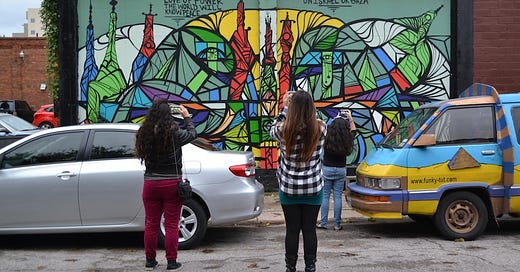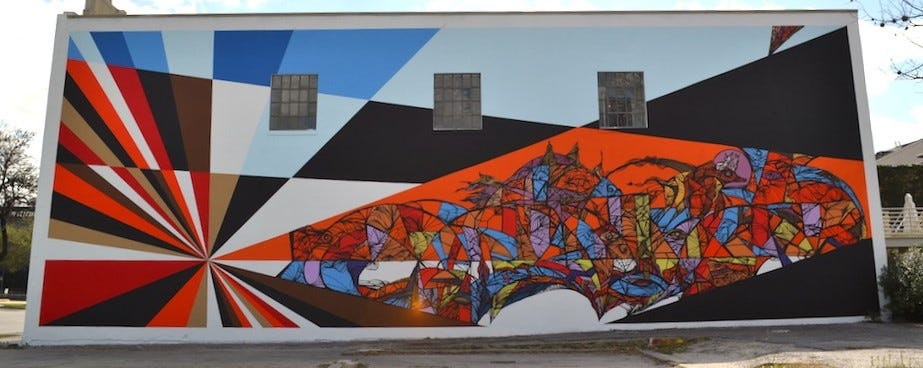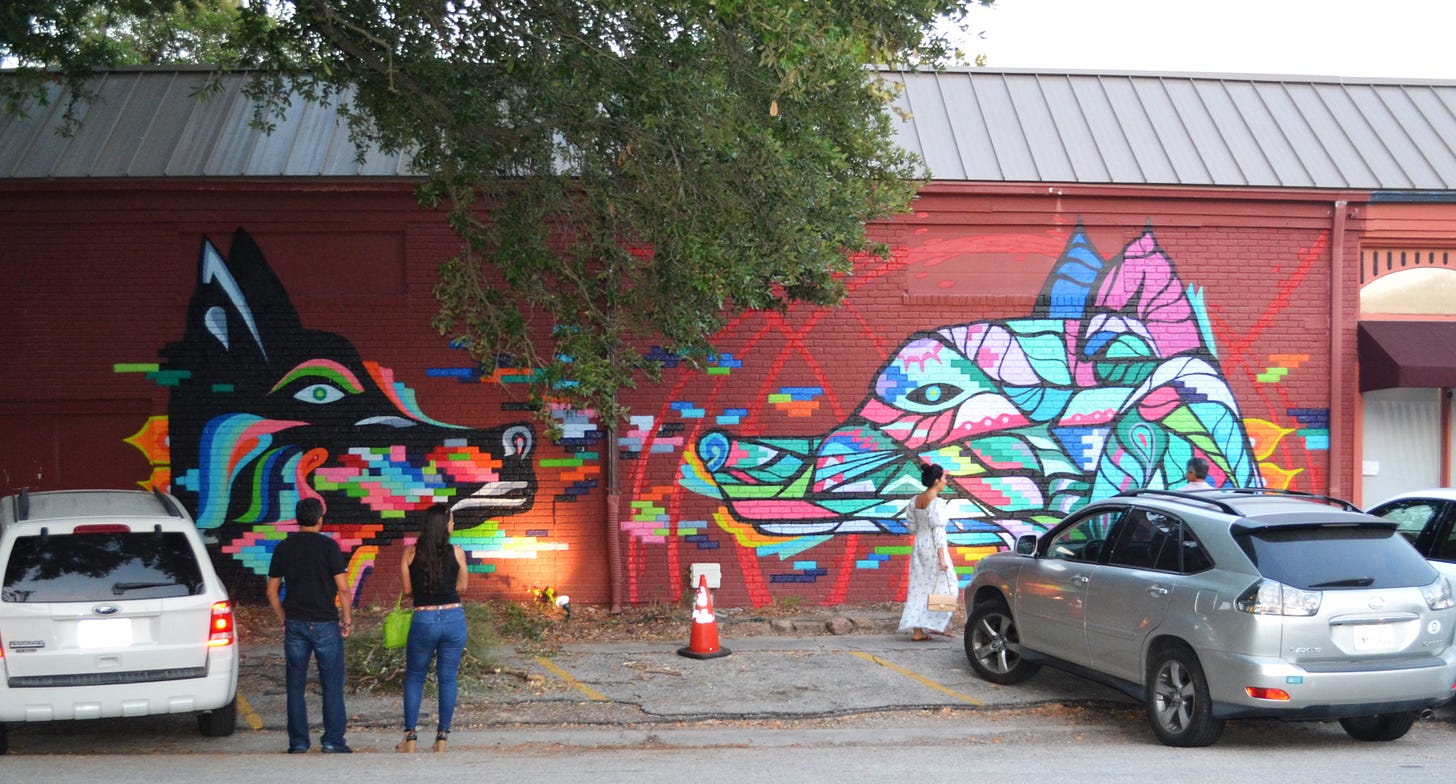I have been watching Daniel Anguilu’s work for at least 10 years now. In the 80s, I became a big fan of graffiti art, including making a few short-lived, utterly illegal murals. (The statute of limitations on those art crimes is long passed.) I was fascinated by the big, rounded Vaughn Bode-inspired lettering. But stumbling across Daniel Anguilu’s work was eye opening because he didn’t employ all those 1980s wild-style motifs. He did retain the idea of a dark heavy outline. But instead of fat bubbly letters, he was drawing pictures that looked as if they were designed to be fantastic stain-glass images. It reminded me in this aspect of French fauvist Georges Rouault. He was obviously talented, and as far as I am concerned, Anguilu stood above his peers in Houston’s graffiti scene. Artists such as Dual and Gonzo 247 have their merits, and Dual’s art has become something I pay close attention to in the last few years. But Anguilu stood supreme.
As Anguilu’s large murals appeared on more and more walls in Houston, one couldn’t help notice them. Indeed, the Houston art world noticed. In 2013, Anguilu collaborated with Aaron Parazette, a former CORE fellow and current UH art professor, on the big, north-facing wall of Lawndale Art & Performance Center. Parazette’s jazzy, geometric abstraction was kluged together with a somewhat abstract fantastic landscape painted by Anguilu.
In 2013, Anguilu had his first exhibit (that I know of) in a white wall art gallery, Peveto - A Fine Art Resource Management Company. I saw that exhibit and remember agreeing with what Bill Davenport wrote about it for Glasstire. He wrote, “Daniel Anguilu is a Houston treasure, and Peveto deserves credit for trying to help him make some money out of his fame, but they could have done a better job.” In a sense, Anguilu and Peveto tried to make the art they showed half-way between a wall mural and easel painting. They did this by producing the art on large pieces of plywood employing Anguilu’s usual technique of spray paint with heavy black outlines.
This exhibit was not very good—it was inferior to his outdoor graffiti work. It felt like a compromise. It was like an adult trying to fit in children’s clothing. The work was produced employing graffiti-writing techniques that just didn’t work on wooden panels—even if they were quite large. This half-way approach didn’t work—there are qualities that make a good graffiti mural and qualities that make a good easel painting, but that compromise pieces in the Peveto show managed to avoid those qualities. Overall it felt cramped.
I don’t know what art shows Anguilu has had since then, except for the one I’m writing about now. Ten years later, Daniel Anguilu has produced a body of work that feels just right for a traditional art gallery. His current exhibit, "Memories from the Future," at Redbud through October 28th.
Anguilu doesn’t let you forget where he came from. On the outside of the gallery is a new mural painted for this show (I assume). The wall was red brick, but the color of the bricks is deceptive—they are painted red. I don’t know if Anguilu put up the red underpainting, or if this was just how he found the wall. On this red background are images of two hounds in profile, facing each other. The left dog is black with colorful markings, some curvilinear shapes, some following the contours of bricks in the wall. On the right is a multicolored, pastel dog’s head, gazing left. This looks like Anguilu’s typical graffiti; it has black outlines, and a dazzling arrangement of colors.
I asked Gus Kopriva, proprietor of Redbud, and he told me that the mural portrays the gallery dogs, two Peruvian hairless dogs. The dog on the right is Otto, who recently died. The untitled mural is a memorial to Otto.
Keep reading with a 7-day free trial
Subscribe to The Great God Pan Is Dead to keep reading this post and get 7 days of free access to the full post archives.






